Wrong side of the Track

Getting caught in a flood was the last thing Peter Foot expected when he cycled South Australia’s Oodnadatta Track.
The man is regarding us as if we are slightly deranged.
“You’re mad,” he says flatly, as if it were an unequivocal truth. I try to think of a witty riposte.
“Tell us something we don’t know,” I say. Choosing not to elaborate upon his statement, the man—a slightly overweight, middle-aged guy in a crisp white polo shirt—climbs into his four-wheel drive and speeds off.
Admittedly, we probably are coming across as a little unhinged right now. We are outside the pub in William Creek, a one horse town in outback South Australia, emptying bottle after bottle of spring water into ten-litre sacks and heaving them onto our already heavily-laden bicycles. We are filthy and wild-looking from the 200km of dirt we’ve cycled to get here, and a pile of empties is gathering at our feet. But there is a reason that we’re doing what we’re doing.
We’ve been told that the bore-water here will make you sick, and none of the rainwater tanks around town have taps on them. So we have taken the only drinking water available to us, a carton of 24, 600ml bottles of spring water, on sale at the pub for the ‘special’ price of $20.
It sounds like daylight robbery, but I can forgive the people of William Creek for being a little possessive of the stuff—they live in the driest region of the driest inhabited continent on earth. A place, we have learned, where it only rains when a cloud gets lost.
In the driest region of the driest inhabited continent on earth … it only rains when a cloud gets lost
My travelling companion, Adam, and I are cycling the Oodnadatta Track, a 620km dirt road that bisects the heart of the South Australian outback and traverses some of the most desiccated land on the continent.
This is not, conventionally speaking, a place for cyclists. The distances are vast and the water scarce. The terrain is flat and, some would say, monotonous. And if you break down out here, a bike shop is a long way away, though you’ll always find a station hand with a welder and some chicken wire.
There are two settlements on the track, the William Creek pub at 200km, and the Aboriginal community of Oodnadatta at 400km. These are the only places one can reliably obtain drinking water, and Oodnadatta is the only place with a general store.
Due to these distances, I am carrying 23 litres of water and 2–3 week’s worth of food. This is before any clothes, camping gear, first aid kit, tools and spare parts, and a few ‘non-essentials’ like a novel and a bottle of scotch.
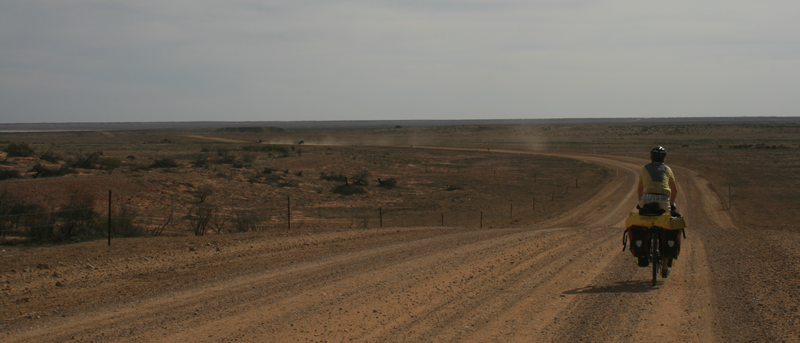 It sounds like a forbidding challenge, and it is, but despite what I said to the man in the white shirt, I don’t think we’re mad—not at all. In fact I think that this is a perfectly sensible, perfectly reasonable thing to do. I’d had an insatiable desire to see this part of the world for some time now, and what better way to do it than from the saddle? And if you can ride to the shops, why can’t you ride through the desert?
It sounds like a forbidding challenge, and it is, but despite what I said to the man in the white shirt, I don’t think we’re mad—not at all. In fact I think that this is a perfectly sensible, perfectly reasonable thing to do. I’d had an insatiable desire to see this part of the world for some time now, and what better way to do it than from the saddle? And if you can ride to the shops, why can’t you ride through the desert?
I had started this trip alone back in Adelaide, but in Marree, the starting point of the Oodnadatta Track, I had met Adam, another twenty-something from Melbourne. He was travelling the same way as me, so we decided to ride the track together. So, four days before William Creek and our encounter with the white shirted man, we rolled out of Marree, onto the Oodnadatta Track, and into the remotest land I had ever been.
For many people the outback conjures images of merciless heat, maddening flies and lonely roads, corrugated and interminable. There were none of these things. The grader had been through only a day or two previously, leaving us a beautifully smooth surface to cycle on. It was winter, so the weather was perfect—sunny and warm without being hot—and the breeze was usually at our backs. There were some flies, but only some. And while undoubtedly arid, the land was not barren; while flat, not monotonous. It was in fact beautiful and varied, and this took me by surprise.
Beauty has a different face out here. There are no sunny glades, leafy trees and grazing roos. Here you see jutting buttes, gibber plain, sand dunes, mulga bush, clay pans, creek beds and low, bare hills streaked different shades of ochre: orange, red, yellow and cream. It takes an adjustment of one’s sense of aesthetic, but it’s an adjustment that came to me as naturally as thirst. I’ve always been enchanted by Australian landscapes, and this was no exception.
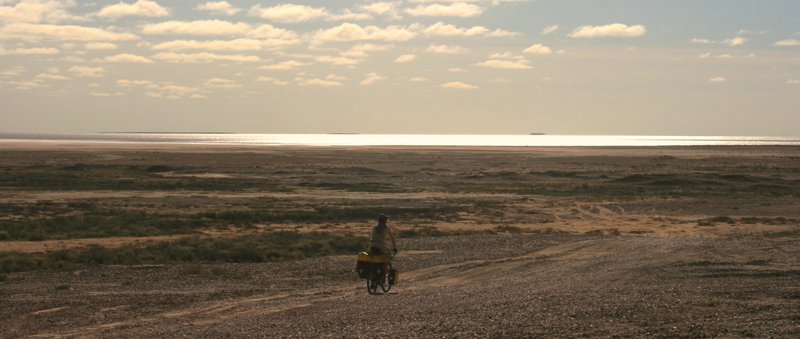 On day two, we were stopped in our tracks by one of the more arresting and unusual things I have seen in my life. Water. An endless, glittering expanse of it stretching as far as you could see, shimmering in the sunlight like a mirage made real. If we were early explorers looking for an inland sea, we would have popped the champagne corks then and there and toasted to our success. We were gazing upon Lake Eyre South.
On day two, we were stopped in our tracks by one of the more arresting and unusual things I have seen in my life. Water. An endless, glittering expanse of it stretching as far as you could see, shimmering in the sunlight like a mirage made real. If we were early explorers looking for an inland sea, we would have popped the champagne corks then and there and toasted to our success. We were gazing upon Lake Eyre South.
Immediately, I set off over the dunes to go and have a look, hopelessly attracted to it like a moth to a flame, as if I had to touch it to make sure that it was real. Standing there in the ankle-deep water felt like being at the beach, but with no seagulls, no games of cricket, no shrieks of children playing in the shallows. Only the lonely whistling of the breeze, the soft lapping of water, the sunshine on my face. And all that empty desert. It was truly bizarre, truly wonderful. Such diversions, however, were infrequent, and for the most part one simply covered miles. As such, we began to settle into a life of rugged simplicity—a raw, sparse existence of sunshine, dirt and toil.
I would wake before sunrise, shimmy out of my sleeping bag and unzip the tent door to a grey and frigid world. First thing to do was fire up the stove and get some water on the boil and then stand there waiting, shivering in my riding knicks, watching oranges and reds splash onto the horizon. Soon I would be cradling my tin cup of coffee—instant, Black & Gold brand—and the world would be in order. I would blow steam off it, slurp it delicately, exclaim at its delicious flavour and extract the warmth from the steel. I loved the routine, its simplicity and discipline.
Morning miles go by quickly. You feel fresh. Conversation is earnest and bubbly. We engage in political debate, Adam arguing that the private sector is best placed to efficiently deliver basic utilities such as gas and electricity, me arguing that the necessities of life should be not-for-profit, “by the people for the people”. We solve virtually all of the world’s problems as we ride, and the miles fly by, and the sound of crunching gravel follows us everywhere.
Lunch break in the shade of a bush, on the side of the road, or in a creek bed. We chew in satisfied silence, like cows or goats, devouring our biscuits and cheese and peanut butter and stale bread. There are always some ants trying to get at the crumbs, always a different type of ant from yesterday. A re-application of sunscreen before we get going again, forearms always greasy with it, and with sweat.
Back to the crunching gravel, back to the road. Always the road. Afternoons tend to drag on, the day gets swollen and worn and dusty and we fall into silence, each in our own world of weariness. My thighs get tired, my shoulders get tight, my butt starts to complain. Still the sound of crunching gravel, and the road. Always the road. At four we start looking for a camp-site.
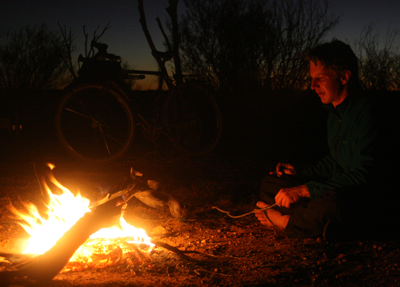 By the time the sun goes down we’re chatting away again. Adam’s got a fire going out of Mulga wood and I’m stretching my glutes out on the bike and looking up at the stars, and other than our voices there is not a sound. The silence is huge. The cold and the stars and the silence. I never came to love slipping into rank-smelling socks in the morning, or the tedium of packing up camp, but it was all part of the fabric of life on the track.
By the time the sun goes down we’re chatting away again. Adam’s got a fire going out of Mulga wood and I’m stretching my glutes out on the bike and looking up at the stars, and other than our voices there is not a sound. The silence is huge. The cold and the stars and the silence. I never came to love slipping into rank-smelling socks in the morning, or the tedium of packing up camp, but it was all part of the fabric of life on the track.
And so we proceeded to William Creek, the bottled water and the white-shirted man.
On the second night out from William Creek, I camped at a known spot beside the dry bed of the Neales River. Rain clouds had gathered in what I thought were perennially blue skies in the afternoon, and the minute I set up my tent the heavens opened, sending me diving into my nylon cocoon.
Adam had been riding a short distance behind me during the day, and we had agreed that we would camp here tonight. But I didn’t go out to check if he had made it due to being totally knackered and not wanting to get wet, so I went to sleep with the rain tapping on the tent nylon.
I woke in the morning to the sound of running water. Just a gentle gurgle, like standing near a water feature in a suburban garden. I opened the tent door and stood up to have a look.
“Holy shit,” I breathed. “Holy shit.” I blinked a few times. Looked left and right. Stared in wonder. Stared in horror. My brain blew some fuses trying to fathom the scene before me.
 Where yesterday afternoon there had been a bone dry river bed, there was now a torrent of coffee-coloured water about one-hundred metres across and god-knows how deep, flowing swiftly in the middle, eddying silently near the banks. It was a flood. In the desert. A flood. And it’s only a few metres from my tent. “Holy shit,” I said once more for good measure.
Where yesterday afternoon there had been a bone dry river bed, there was now a torrent of coffee-coloured water about one-hundred metres across and god-knows how deep, flowing swiftly in the middle, eddying silently near the banks. It was a flood. In the desert. A flood. And it’s only a few metres from my tent. “Holy shit,” I said once more for good measure.
Then a thought pierced the pre-caffeine fug in my head like a pin through the skin of a balloon. A thought so simple and so profound. “I’m stuck. I’m stuck in the most remote place I’ve ever been.” Oodnadatta, the way forward, was on the other side of the river, and there was no way I, or anybody else, was getting across it any time soon.
This thought opened the floodgates to a number of others: How long before the water goes down and I can continue? What if it keeps raining and I can’t move for a week? How long will my water last? I wouldn’t want to drink the flood water unless I was truly desperate, it’s sure to be full of cow shit and other run-off. And where’s Adam?
I walked along the river bank, looking for him, shouting his name. Nothing. Shit, what if he’d camped too low? What if he’d been inundated? It was not inconceivable that someone could drown in such circumstances. You could swallow a lungful of water before you’d even woken up, and then, in the pitch black, half demented by sleep, panicked by the inability to breathe, perhaps with the tent collapsing around you, wet nylon clinging to you like plaster, you might start fumbling for the zips, all the while the water rising… I shook the thought out of my head.
And then I spotted him. On the other side! A tiny figure with a bike across the watery expanse between us. He was so far away we could only exchange some rudimentary hand signals, and after a while he left in the direction of Oodnadatta.
There was nothing that could be done. Except wait, and use my water sparingly. So I sat under a tree like a holy man and watched the water slide by and thought about life. After a while I noticed that the water was going down. Slowly, but it was going down. And the clouds were getting thinner. And in the early afternoon water birds started appearing, swooping in from god-knows-where. Herons stalking in the shallows, pelicans trolling about on the water, and little waders scampering along the banks. It was all rather absurd and magical.
The next morning the water had gone down dramatically, enough that I could push the bike through. Just as I was about to set off a ute—with two men in the cab and one in the tray—came to a stop next to me. One of them stepped out and walked over to me with a lithe and worldly gait.
“Is the other bloke on the pushbike your mate?” He said through his lily-white moustache, weathered skin creasing around his mouth as he spoke.
“Yes, have you found him?”
“We found his bike abandoned by the side of the road towards Oodnadatta. Haven’t seen him though. You better stick your stuff in the back and get a lift with us to Oodnadatta mate. You won’t get far on your own, the road’s a mess.”
I did what I was told and hauled my luggage and my bike onto the tray and climbed in. The guy with the moustache—Neville—was right. The road had become an impassable, Somme-like quagmire. He revved the ute hard and it slipped and drifted continuously, spraying water and mud in great arcs. The wind whipped my hair and the land whizzed by at what seemed like light speed after so many weeks of slow travel.
We soon came to Adam’s bike, by the edge of the road, on its side, mud caked onto the wheels and wedged against the frame, a forlorn sight if ever I’d seen one. On it was a note: walking to Ood, left 8:45 16/6. Adam Taylor. That was this morning. We hauled Adam’s bike onto the tray and drove on. Adam’s footprints were visible in the road now, wandering left and right like a drunk, evidence of his efforts to find the easiest way through the slop.
It was a stark and evocative sight, lone tracks in such an empty place. For the second time I was genuinely concerned for him—the day was warming up, and I knew that he had been carrying less water than me. I couldn’t help but picture him stumbling around, half-starved, sun-struck, maddened by thirst and staggering to a lonely and protracted death upon the gibber plain. And so we drove on, following his footprints, me gripping the edge of the tray, craning my neck, scanning the road for him. We went on and on, still looking, still following his tracks in the mud.
“There, there he is!” A lone figure on the road ahead. We pull up next to him and I hand him a water bottle, but he doesn’t take it. Amazingly, he’s fine, in good spirits, chipper even. He had been surviving on boiled flood water, and had had enough food to keep him going. He climbs in and we ride the remaining 40km to Oodnadatta, chatting away again.
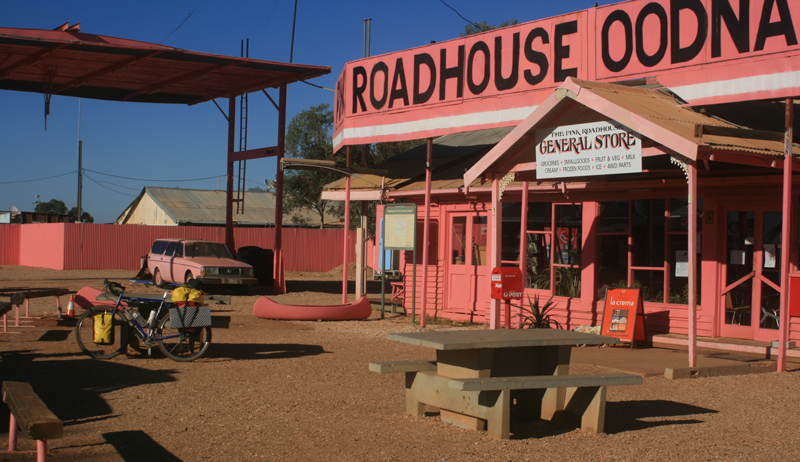 We spent a week in Oodnadatta resting and waiting for the roads to dry out before setting off for the remaining 220km leg to the Stuart Highway. A few days later, with 10km to go we were feeling pretty good about ourselves. We had taken on one of the most famous four-wheel-drive tracks in Australia, escaped a flood and were about to conquer it. Then a dot appeared on the road ahead that materialised into a cyclist, travelling at some speed with a powerful and effortless pedalling action.
We spent a week in Oodnadatta resting and waiting for the roads to dry out before setting off for the remaining 220km leg to the Stuart Highway. A few days later, with 10km to go we were feeling pretty good about ourselves. We had taken on one of the most famous four-wheel-drive tracks in Australia, escaped a flood and were about to conquer it. Then a dot appeared on the road ahead that materialised into a cyclist, travelling at some speed with a powerful and effortless pedalling action.
It was a guy in his fifties, wearing black knicks and a business shirt with the sleeves cut off. He was riding something that looked like it was bought in the eighties and barely serviced since—a beaten up old steel thing with skinny tyres and paint chips, and a sleeping bag the size of a Ford Fiesta occy-strapped to the back. It made us look thoroughly over-equipped, like we were planning to ride to the moon.
He was the only other cyclist we had seen on the entire track, and we greeted him with warm handshakes and smiles and asked questions about where he had been and where he was going and all the usual things. He answered that he planned to do the entire track in six or seven days, an average of around 100km a day, as this was about the pace it took him to do the Birdsville, and the Strzelecki, and the Tanami, and a hat-full of other ridiculously difficult rides that I can’t remember the names of. And he said it with the air of someone you might stop on the street to ask for directions—distracted, impatient to get on with the business of the day—in his case, being a total bad-arse and making us feel stupid.
We got the feeling that he was vaguely annoyed at the hold up, at the requirement to engage in small talk—that to him we were nothing more than a hindrance to his forward progress. So we wished him well and continued on, and in half an hour we had reached the Stuart Highway. Adam and I turned to each other and shook hands.
“Thanks for the ride mate.”
“Yeah, you too mate.”
When I was back at work at a Melbourne bike shop I mentioned this encounter to one of my colleagues.
“There’s always some old guy,” he said. “No matter how far you are from civilisation, no matter how tough the ride is, there’s always some old guy on a crappy old bike out there that’ll make you look like a wimp.” And so it was.
Peter Foot details more cycling adventures and how to have them at adventurecyclingvictoria.com.
Ride On content is editorially independent, but is supported financially by members of Bicycle Network. If you enjoy our articles and want to support the future publication of high-quality content, please consider helping out by becoming a member.





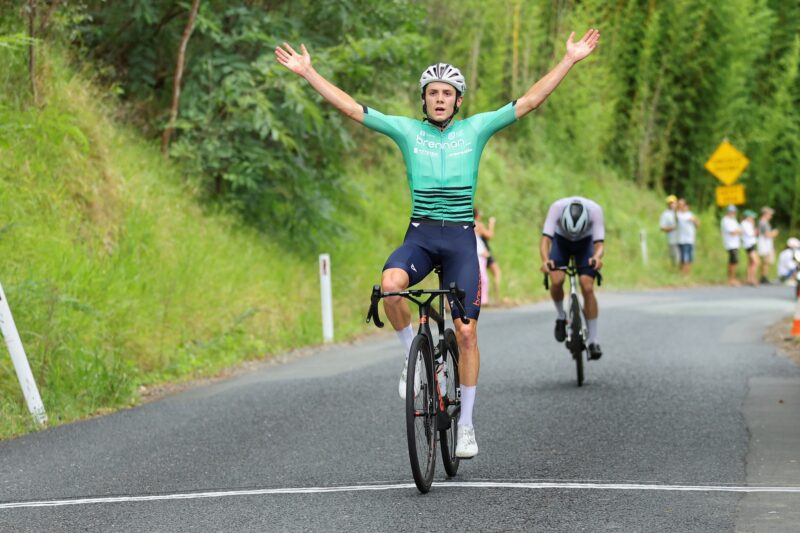
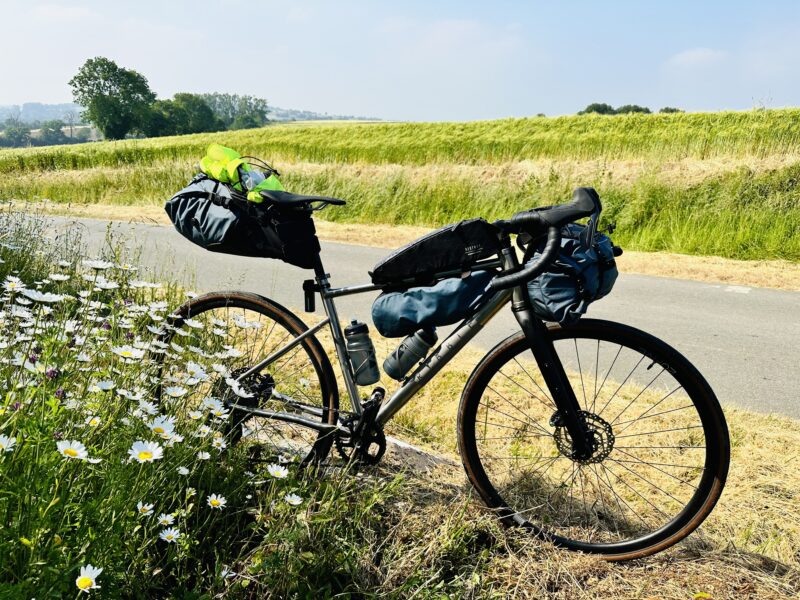
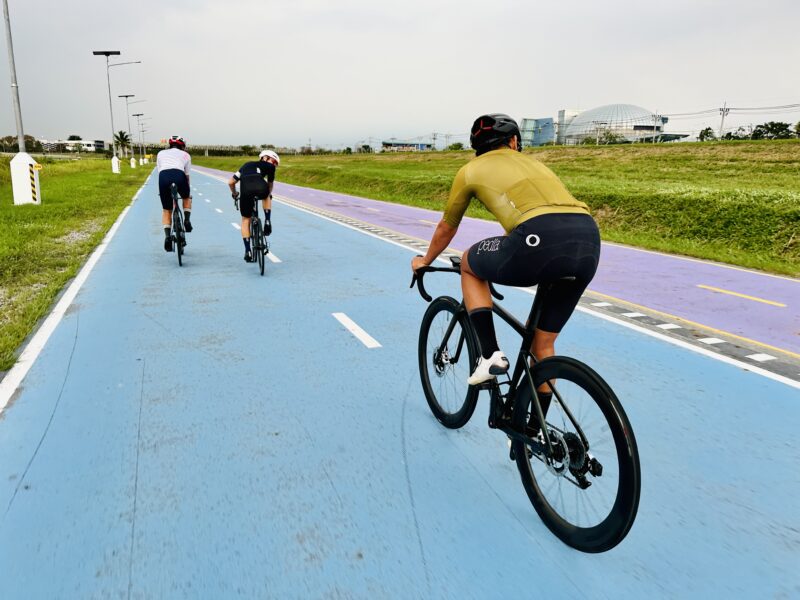
Wonderful writing and descriptions.
Great read. Thanks.